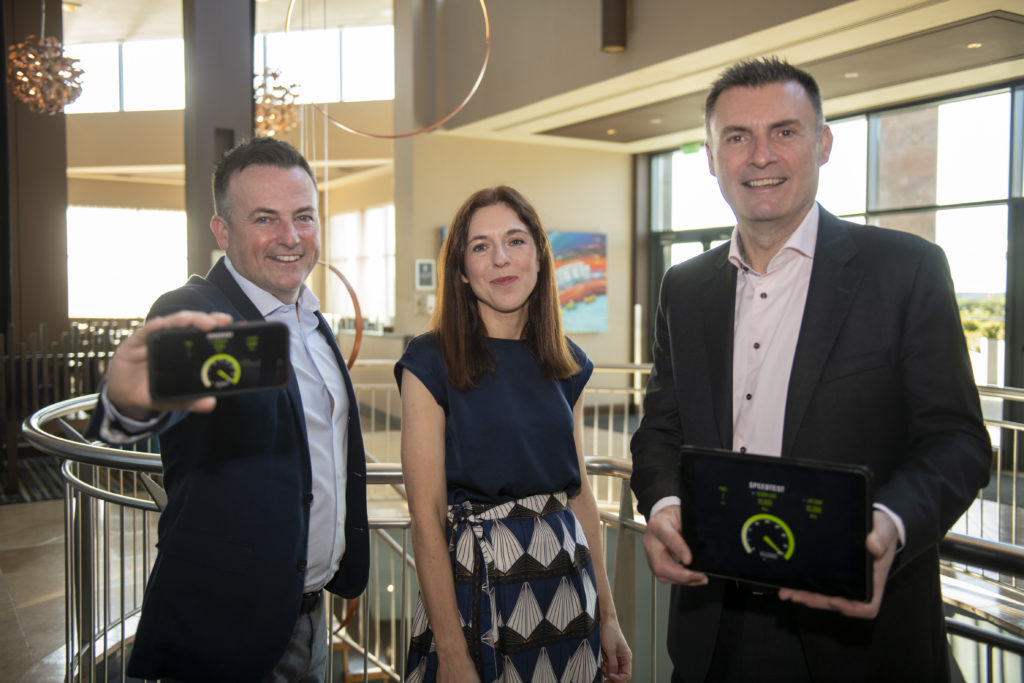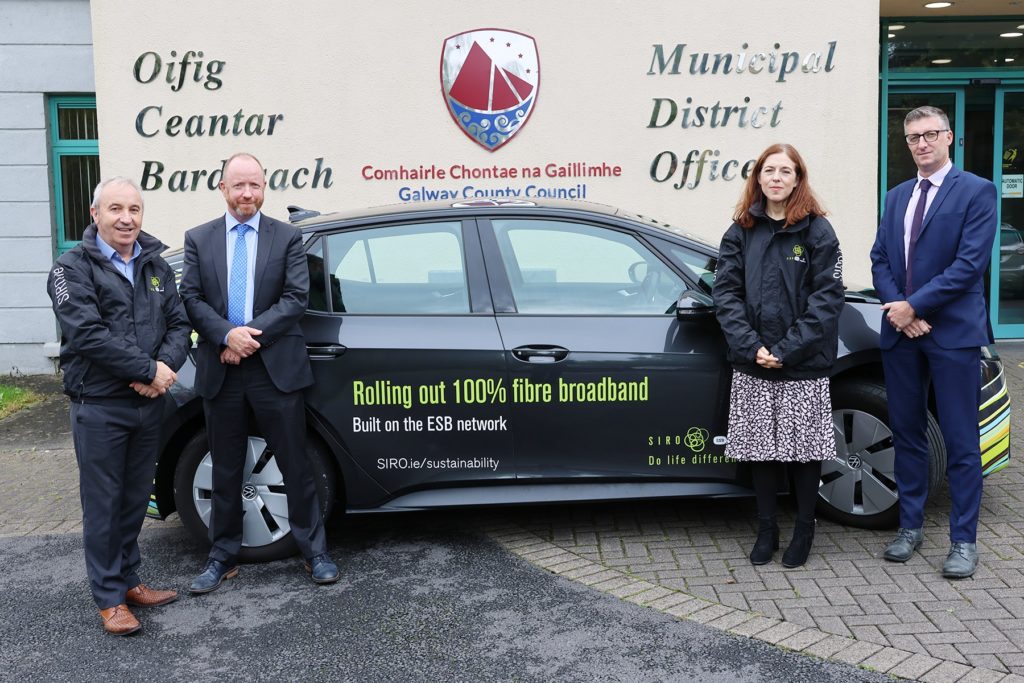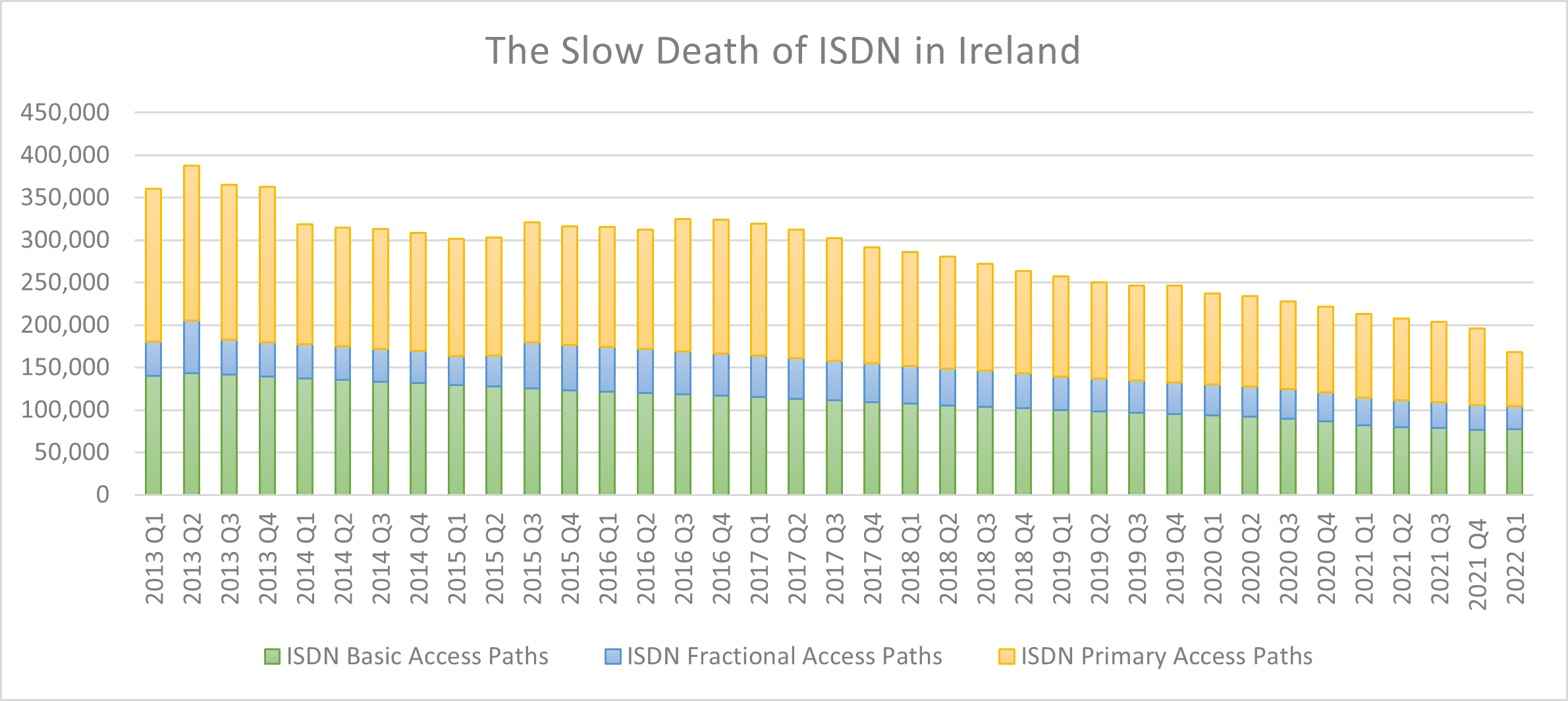 Barry has spent over thirty-five years working in ICT. He started as a Trainee Programmer in the Northern Ireland Civil Service and progressed through various roles to eventually become the Director of ICT Shared Services and Strategy for the NI Government. Barry has been CIO for the Irish Government since April 2016 with the primary task of taking forward the Public Service ICT and eGovernment Strategies. These set out ambitions for developing the use of shared services, digital services and data to better serve the people of Ireland and ensure that Ireland is well-placed to benefit from European initiatives such as the Digital Single Market.
Barry has spent over thirty-five years working in ICT. He started as a Trainee Programmer in the Northern Ireland Civil Service and progressed through various roles to eventually become the Director of ICT Shared Services and Strategy for the NI Government. Barry has been CIO for the Irish Government since April 2016 with the primary task of taking forward the Public Service ICT and eGovernment Strategies. These set out ambitions for developing the use of shared services, digital services and data to better serve the people of Ireland and ensure that Ireland is well-placed to benefit from European initiatives such as the Digital Single Market.
Tell us about your role?
The Office of the Government Chief Information Officer (OGCIO) leads the digital agenda across Government, working in collaboration with organisations across the Civil and Public Service. OGCIO’s most recent Strategy, Connecting Government 2030: A Digital and ICT Strategy for Ireland’s Public Service, sets out the Government’s Digital Vision for the next several years, covering areas such as digital ambition, talent development, and inclusion. OGCIO is also involved in the delivery of major Government technical projects such as the Contact Tracing App and Digital COVID certificate, and a range of shared initiatives and systems. OGCIO participates in a range of internal, national and international working groups, steering and programme boards; has significant engagement with multilateral institutions including the OECD, UN and in particular the EU; and also plays a leadership role on innovation across the Public Service including through the development and application of a range of ICT policies.Outline the role digital technologies play delivering public service today.
As the Government Chief Information Officer, I am the most senior advisor to the Government on all matters digital with specific reporting responsibilities to the Minister for Public Expenditure and Reform and the Junior Minister for eGovernment and Procurement. I played a prominent role in the development of the National Digital Strategy, Harnessing Digital – The Digital Ireland Framework, which was published in February and sets out a high-level pathway to support Ireland’s ambition to be a digital leader at the heart of European and global digital developments. I also represent Ireland at many high-level meetings at EU and OECD level seeking to shape the digital agendas of these organisations; and I am involved in the leadership of many programmes with a substantial digital or ICT element, for example Gov.ie, MyGovID, Open Data, the Data Sharing & Governance Act, the Contact Tracing App, and the Vaccination roll-out.What are the key benefits that digital technologies can bring to society and business?
At public service level, we believe that digital can benefit all of society. We can facilitate those who are comfortable with digital technology to renew their driving licence, or make a tax enquiry, for example, with the same ease as booking an airline ticket or making a banking transaction. However, we also believe that if we achieve our goal of 90% of our most used services being consumed online then this will free up resources to better serve those who are unable to use the digital offerings.We believe that the ability to do anything from the home shouldn’t detract from the importance of socialising and maintaining the value of communities in our lives. This is why many government digital initiatives, including broadband roll-out and digital hubs, are community-oriented.”“At community level we see the benefit of having more community-driven digital initiatives from group learning to accessing the technology itself.”

As connectivity improves across Ireland, what do you see as the big opportunities for Irish businesses from accelerated digital adaptation?
I think we all accept that going online can and does bring advantages to businesses, e.g., lower operating costs, 24/7 presence and greater out-reach. However, CSO research tells us that, while more than four in five Irish-based businesses have a website, only 40 per cent actually sell online. This means that there is an opportunity not just for businesses but also for national reputation and GDP growth. This is why the Harnessing Digital strategy sets challenging business targets for 2030 such as 75% enterprise take-up of Cloud, Big Data and AI; and 90% of SMEs at basic digital intensity. It also makes financial and advisory support commitments to help this to be achieved.“It is very clear that the pandemic has opened up new commercial opportunities and these should be exploited. Ireland’s acceleration towards full and fast connectivity will provide a strong foundation to build upon.”

 On 1 June last, SIRO launched its’ 10 Gigabit (10G) enabled broadband network in Galway city. The first city in Ireland to have this high speed, large bandwidth network at its disposal.
At the end August, SIRO’s entire fibre broadband network was upgraded to 10 Gigabits. This €10 million, 15-month upgrade project includes our full existing SIRO network, i.e., 450,000+ premises we have already passed and the further 320,000 we are in the process of passing right now.
On 1 June last, SIRO launched its’ 10 Gigabit (10G) enabled broadband network in Galway city. The first city in Ireland to have this high speed, large bandwidth network at its disposal.
At the end August, SIRO’s entire fibre broadband network was upgraded to 10 Gigabits. This €10 million, 15-month upgrade project includes our full existing SIRO network, i.e., 450,000+ premises we have already passed and the further 320,000 we are in the process of passing right now.
 At SIRO we know, that at least for the short-to-medium term, end users of this much larger bandwidth will be enterprise/business users vs. residential consumers.
It makes sense.
It is businesses, whether small or large, who typically move large data sets. However, the number of businesses who falls into this category is not as niche as it once might have been. As ever more intensive applications run on our servers or are stored in the Cloud, the amount of data created, stored and transferred increases each day. Add in the growing automation of once manual tasks and the need for high-speed internet as the key enabler of these processes becomes clear.
At SIRO we know, that at least for the short-to-medium term, end users of this much larger bandwidth will be enterprise/business users vs. residential consumers.
It makes sense.
It is businesses, whether small or large, who typically move large data sets. However, the number of businesses who falls into this category is not as niche as it once might have been. As ever more intensive applications run on our servers or are stored in the Cloud, the amount of data created, stored and transferred increases each day. Add in the growing automation of once manual tasks and the need for high-speed internet as the key enabler of these processes becomes clear.
 Business, for reasons of productivity, reputation and of course the bottom line, cannot afford to have any bottlenecks in their connectivity which can hold their business back.
Businesses with many employees and multiple clients all logging on at the same time are obvious candidates for much higher speeds. Yet over recent years as our use of digital technologies has grown, it has spawned new types of business which are equally heavy data users.
Businesses in the creative sector is one example. While they may not be big in terms of employee head count, they are big users of data. Think content creators in advertising, digital or marketing agencies, animators, film or videographers, game design – all transferring large files each day. Though smaller companies, the creative sector in its’ totality is a significant sector, employing up to 5% of the Irish workforce or about 100,000.
Business, for reasons of productivity, reputation and of course the bottom line, cannot afford to have any bottlenecks in their connectivity which can hold their business back.
Businesses with many employees and multiple clients all logging on at the same time are obvious candidates for much higher speeds. Yet over recent years as our use of digital technologies has grown, it has spawned new types of business which are equally heavy data users.
Businesses in the creative sector is one example. While they may not be big in terms of employee head count, they are big users of data. Think content creators in advertising, digital or marketing agencies, animators, film or videographers, game design – all transferring large files each day. Though smaller companies, the creative sector in its’ totality is a significant sector, employing up to 5% of the Irish workforce or about 100,000.




 SIRO, a joint venture between ESB and Vodafone, is currently rolling out a 100% fibre broadband network across 154 towns and cities across Ireland, with services currently available to 450,000+ premises and reaching 770,000 premises over the next four years.
In October 2021, SIRO launched 2 Gigabit speeds for the residential market. Today’s announcement of 10 Gigabits is initially focused on the enterprise market. The latter have a need to progressively scale up their bandwidth from 2 Gigabits up to 10 Gigabits in the short to medium term.
The upgrade to 10 Gigabits reflects SIRO’s ambition to continuously bring innovation to the Irish broadband market. SIRO is Ireland’s sole open-access wholesale-only broadband operator and was first to introduce 1 Gigabit broadband to Irish homes. It is now stretching its offering further with speeds of 2 Gigabits for residential and up to 10 Gigabits for enterprise customers, respectively.
The benefits of multi-gigabit speeds include:
Ensure fastest speeds: Symmetrical speeds up to ten times faster than the best standard currently available of up to 1 Gigabit. A 10 Gigabit connection can transfer 1 Gigabit of data in 0.8 seconds or upload a file of 20 Gigabits in under 20 seconds.
Provide scalable connectivity: A future-proofed connection to support the increasing number of connected devices used by businesses.
Enhance cyber protection: Enhanced data and network protection by facilitating network management systems which reduce cybersecurity risks.
Support new technologies: The bandwidth to integrate emerging technologies, including artificial intelligence, virtual reality, 3D technology or voice recognition tools.
Commenting on the announcement, SIRO CEO, John Keaney, said:
“For SIRO, completing our transition to a 10 Gigabit-enabled network is about ensuring we continue to lead the market in terms of delivering on Ireland’s future broadband needs for the decades ahead.
“All aspects of business processes and operations are increasingly digitised. Reliable and future proofed connectivity is the foundation upon which they all rest.
“This upgrade gives enterprises the opportunity to plan and scale up their bandwidth requirements as their data demands and business requirements grow.
Rather than wait for the broadband infrastructure to catch up, businesses can now have the certainty that they can access higher speeds and capacity as and when they need it,” added Mr. Keaney.
To find out if you can avail of 10 Gigabit today, check your Eircode today!
[lookup_modal type="eircode" button-text="Search Your Eircode Today" position="mid" title="Search Your Eircode Today"]
SIRO, a joint venture between ESB and Vodafone, is currently rolling out a 100% fibre broadband network across 154 towns and cities across Ireland, with services currently available to 450,000+ premises and reaching 770,000 premises over the next four years.
In October 2021, SIRO launched 2 Gigabit speeds for the residential market. Today’s announcement of 10 Gigabits is initially focused on the enterprise market. The latter have a need to progressively scale up their bandwidth from 2 Gigabits up to 10 Gigabits in the short to medium term.
The upgrade to 10 Gigabits reflects SIRO’s ambition to continuously bring innovation to the Irish broadband market. SIRO is Ireland’s sole open-access wholesale-only broadband operator and was first to introduce 1 Gigabit broadband to Irish homes. It is now stretching its offering further with speeds of 2 Gigabits for residential and up to 10 Gigabits for enterprise customers, respectively.
The benefits of multi-gigabit speeds include:
Ensure fastest speeds: Symmetrical speeds up to ten times faster than the best standard currently available of up to 1 Gigabit. A 10 Gigabit connection can transfer 1 Gigabit of data in 0.8 seconds or upload a file of 20 Gigabits in under 20 seconds.
Provide scalable connectivity: A future-proofed connection to support the increasing number of connected devices used by businesses.
Enhance cyber protection: Enhanced data and network protection by facilitating network management systems which reduce cybersecurity risks.
Support new technologies: The bandwidth to integrate emerging technologies, including artificial intelligence, virtual reality, 3D technology or voice recognition tools.
Commenting on the announcement, SIRO CEO, John Keaney, said:
“For SIRO, completing our transition to a 10 Gigabit-enabled network is about ensuring we continue to lead the market in terms of delivering on Ireland’s future broadband needs for the decades ahead.
“All aspects of business processes and operations are increasingly digitised. Reliable and future proofed connectivity is the foundation upon which they all rest.
“This upgrade gives enterprises the opportunity to plan and scale up their bandwidth requirements as their data demands and business requirements grow.
Rather than wait for the broadband infrastructure to catch up, businesses can now have the certainty that they can access higher speeds and capacity as and when they need it,” added Mr. Keaney.
To find out if you can avail of 10 Gigabit today, check your Eircode today!
[lookup_modal type="eircode" button-text="Search Your Eircode Today" position="mid" title="Search Your Eircode Today"]  The rollout in Ballinasloe and Loughrea is part of SIRO’s ongoing roll out in Galway city and county. The company has already made its full fibre broadband network available to over 33,000 homes and businesses in Galway city. The investment is part of the company’s ongoing fibre rollout across Ireland, targeting 154 cities and towns and 770,000 premises.
Areas within Ballinasloe that will be connected include (but are not limited to): Townparks, Portnick, Poolboy, Dunlo, Kilgarve, Church Street, Bóthar Sáirséal, Meadowbrook, Beechlawn, Esker Hills.
Areas within Loughrea that will be connected include (but are not limited to): Portumna Road, Danesfort, Barrack Street, Abbey Street, Athenry Road, Ashlawn, Galway Road, Gort Road, Main Street, Cosmona, and The Hill.
SIRO’s network in Ballinasloe, Loughrea and Galway City is a 10 Gigabit-enabled network, which means that
The rollout in Ballinasloe and Loughrea is part of SIRO’s ongoing roll out in Galway city and county. The company has already made its full fibre broadband network available to over 33,000 homes and businesses in Galway city. The investment is part of the company’s ongoing fibre rollout across Ireland, targeting 154 cities and towns and 770,000 premises.
Areas within Ballinasloe that will be connected include (but are not limited to): Townparks, Portnick, Poolboy, Dunlo, Kilgarve, Church Street, Bóthar Sáirséal, Meadowbrook, Beechlawn, Esker Hills.
Areas within Loughrea that will be connected include (but are not limited to): Portumna Road, Danesfort, Barrack Street, Abbey Street, Athenry Road, Ashlawn, Galway Road, Gort Road, Main Street, Cosmona, and The Hill.
SIRO’s network in Ballinasloe, Loughrea and Galway City is a 10 Gigabit-enabled network, which means that  SIRO is a joint venture company between ESB and Vodafone, founded in 2015. SIRO’s state-of-the-art fibre broadband network is built on the ESB electricity infrastructure, trusted for its reliability and resilience. Overall, the company is investing more than €1 billion in delivering high speed, future proofed broadband across Ireland.
Commenting on the launch in Ballinasloe and Loughrea, SIRO CEO John Keaney said:
“Since we first started rolling out our network in Galway city, over four years ago demand has been strong for SIRO’s fibre broadband service. Our expansion now to Loughrea and Ballinasloe reflects the broader demand across Galway – city and county.
“Reliable, resilient and future proofed broadband is a game changer for regional towns and having access to SIRO’s network will create huge investment and job creation opportunities for towns such as Ballinasloe and Loughrea.
“SIRO is pleased to support this objective and to play a part in giving individuals and businesses a choice about where and how they live and work. We have had positive engagement with local stakeholders on the ground in both towns and we are now excited about getting on with our roll-out and connection process in the months ahead,” added Mr. Keaney.
Welcoming today’s announcement from SIRO, Galway County Council Chief Executive Jim Cullen stated:
“The building of these fibre networks will be a significant investment in these two towns.
The delivery of such infrastructure is a key economic enabler for existing business, with the potential to help increase their online presence and to trade online nationally and internationally.
“It will have positive impacts for both towns around growth, economic spin off effects & makes these towns more attractive for future investment.
“It will open up opportunities for citizens to work locally, with the delivery of high-speed connectivity, as remote working becomes more realistic for larger numbers of people, which should lead to a lowering of the towns carbon footprints and the residents of these towns will have more choice on broadband service provision in the future,” added Mr Cullen
SIRO as an open access wholesaler, partners with twenty broadband retailers across Ireland, to ensure that customers and businesses enjoy greater choice and competition.
Retailers offering SIRO residential, or enterprise broadband products include: Digiweb, Blacknight, Airwire, Sky, Vodafone, Virgin, Fastcom, Telcom, Viatel and Pure Telecom.
To register your interest, and to find out when SIRO will become available to your home or business, click here
[mailchimp_modal button-text="Register Your Interest" title="Sign Up Form" position="mid"]
SIRO is a joint venture company between ESB and Vodafone, founded in 2015. SIRO’s state-of-the-art fibre broadband network is built on the ESB electricity infrastructure, trusted for its reliability and resilience. Overall, the company is investing more than €1 billion in delivering high speed, future proofed broadband across Ireland.
Commenting on the launch in Ballinasloe and Loughrea, SIRO CEO John Keaney said:
“Since we first started rolling out our network in Galway city, over four years ago demand has been strong for SIRO’s fibre broadband service. Our expansion now to Loughrea and Ballinasloe reflects the broader demand across Galway – city and county.
“Reliable, resilient and future proofed broadband is a game changer for regional towns and having access to SIRO’s network will create huge investment and job creation opportunities for towns such as Ballinasloe and Loughrea.
“SIRO is pleased to support this objective and to play a part in giving individuals and businesses a choice about where and how they live and work. We have had positive engagement with local stakeholders on the ground in both towns and we are now excited about getting on with our roll-out and connection process in the months ahead,” added Mr. Keaney.
Welcoming today’s announcement from SIRO, Galway County Council Chief Executive Jim Cullen stated:
“The building of these fibre networks will be a significant investment in these two towns.
The delivery of such infrastructure is a key economic enabler for existing business, with the potential to help increase their online presence and to trade online nationally and internationally.
“It will have positive impacts for both towns around growth, economic spin off effects & makes these towns more attractive for future investment.
“It will open up opportunities for citizens to work locally, with the delivery of high-speed connectivity, as remote working becomes more realistic for larger numbers of people, which should lead to a lowering of the towns carbon footprints and the residents of these towns will have more choice on broadband service provision in the future,” added Mr Cullen
SIRO as an open access wholesaler, partners with twenty broadband retailers across Ireland, to ensure that customers and businesses enjoy greater choice and competition.
Retailers offering SIRO residential, or enterprise broadband products include: Digiweb, Blacknight, Airwire, Sky, Vodafone, Virgin, Fastcom, Telcom, Viatel and Pure Telecom.
To register your interest, and to find out when SIRO will become available to your home or business, click here
[mailchimp_modal button-text="Register Your Interest" title="Sign Up Form" position="mid"]  SIRO is a joint venture company between ESB and Vodafone, founded in 2015. SIRO’s state-of-the-art fibre broadband network is built on the ESB electricity infrastructure, trusted for its reliability and resilience. Overall, the company is investing more than €1 billion in delivering high speed, future proofed broadband across Ireland to 154 cities and towns.
The company already has a significant presence in North Dublin where it is available to
SIRO is a joint venture company between ESB and Vodafone, founded in 2015. SIRO’s state-of-the-art fibre broadband network is built on the ESB electricity infrastructure, trusted for its reliability and resilience. Overall, the company is investing more than €1 billion in delivering high speed, future proofed broadband across Ireland to 154 cities and towns.
The company already has a significant presence in North Dublin where it is available to  Commenting on the sponsorship, Michael Keegan, who helps run the academy at Trinity Donaghmede FC notes:
“Before Covid hit we had 17 teams within the club. Since then, this has grown by a further 7 teams to 24 today. Ideally every team needs a sponsor. What this sponsorship does is give an incredible boost for the club - kids, managers / parents, which can’t be underestimated.
“It is a huge boost for all involved. Without a sponsor's kind generosity, the club wouldn't exist"
“Most of all, the kids' faces and their excitement when they receive the new gear is priceless! It's all voluntary, so getting yearly sponsorships is massive for our club. It makes it all worthwhile.”
SIRO is available in Donaghmede and across Fingal. For more information on if SIRO is available for your home or business, please visit
Commenting on the sponsorship, Michael Keegan, who helps run the academy at Trinity Donaghmede FC notes:
“Before Covid hit we had 17 teams within the club. Since then, this has grown by a further 7 teams to 24 today. Ideally every team needs a sponsor. What this sponsorship does is give an incredible boost for the club - kids, managers / parents, which can’t be underestimated.
“It is a huge boost for all involved. Without a sponsor's kind generosity, the club wouldn't exist"
“Most of all, the kids' faces and their excitement when they receive the new gear is priceless! It's all voluntary, so getting yearly sponsorships is massive for our club. It makes it all worthwhile.”
SIRO is available in Donaghmede and across Fingal. For more information on if SIRO is available for your home or business, please visit  “Thanks, hun! Penney's!” That’s the badge of honour often recited when a woman in Ireland is complimented on their outfit.
Fast fashion, both in Ireland and across the world has been the norm for the last 30 years. It’s not so long ago, people wouldn’t bat an eye to doing large shopping hauls for no real cause. Now, amidst a global climate crisis, attitudes are shifting towards creating long lasting, sustainable fashion choices.
A report from
“Thanks, hun! Penney's!” That’s the badge of honour often recited when a woman in Ireland is complimented on their outfit.
Fast fashion, both in Ireland and across the world has been the norm for the last 30 years. It’s not so long ago, people wouldn’t bat an eye to doing large shopping hauls for no real cause. Now, amidst a global climate crisis, attitudes are shifting towards creating long lasting, sustainable fashion choices.
A report from  Then, smartphones and social media arrived and changed the face of commerce forever. Once you could order clothes online through Instagram and Facebook in 2016, fast fashion orders accelerated. As well as that, websites such as Pretty Little Thing, Shein, Missguided and Boohoo.com have become some of the trendiest fashion sites to order from today.
But what if you could remain fashionable while reducing your carbon footprint?
The Internet, while acting as an enabler for fast fashion, can also be a driving force for creating sustainable fashion choices. A notable example of this has been eBay, who have been around since 1995.
For years, eBay has been an accessible marketplace selling pre-loved goods of all sorts, with clothes included. This year, ITV’s Love Island, ended their collaboration with fast fashion company Pretty Little Thing as their fashion sponsor, and replaced them with eBay, recognising the impact the show can have on its impressionable audience.
eBay isn’t the only site dedicated to creating a circular economy. In 2016, Facebook launched Marketplace, which was established to be a direct competitor with eBay and US ad listing service, Craigslist. Facebook’s Marketplace enables people to advertise goods for sale or for free to their local community, which has proved to be a success, with over 1 billion monthly users.
Then, smartphones and social media arrived and changed the face of commerce forever. Once you could order clothes online through Instagram and Facebook in 2016, fast fashion orders accelerated. As well as that, websites such as Pretty Little Thing, Shein, Missguided and Boohoo.com have become some of the trendiest fashion sites to order from today.
But what if you could remain fashionable while reducing your carbon footprint?
The Internet, while acting as an enabler for fast fashion, can also be a driving force for creating sustainable fashion choices. A notable example of this has been eBay, who have been around since 1995.
For years, eBay has been an accessible marketplace selling pre-loved goods of all sorts, with clothes included. This year, ITV’s Love Island, ended their collaboration with fast fashion company Pretty Little Thing as their fashion sponsor, and replaced them with eBay, recognising the impact the show can have on its impressionable audience.
eBay isn’t the only site dedicated to creating a circular economy. In 2016, Facebook launched Marketplace, which was established to be a direct competitor with eBay and US ad listing service, Craigslist. Facebook’s Marketplace enables people to advertise goods for sale or for free to their local community, which has proved to be a success, with over 1 billion monthly users.
 Thrifting is no longer confined to store-front shops. Some of the best goods can come from someone else’s wardrobe. In 2011, the concept drove the creation of
Thrifting is no longer confined to store-front shops. Some of the best goods can come from someone else’s wardrobe. In 2011, the concept drove the creation of  Integrated Services Digital Network (ISDN) first began to be used globally in the 1980s. It is effectively a set of communication standards for simultaneous digital transmission of voice, video, data and other network services over the digitalised circuits of the public telephone network. However globally, even by the end of the 1980s, the technology was already being overtaken by new network systems with much faster speeds.
However, not so the case in Ireland. Here, ISDN was introduced and billed as a step change in the digitalisation of the telephone network by Telecom Eireann in 1994, with the promise of multiple direct dial numbers (DDIs) over a single shared bearer. Originally, its capability to communicate video was also a key selling feature, with one of the original users of ISDN in Ireland being Gairmscoil Éinne on Inis Mór where pupils received their German lessons from a teacher on the mainland.
Integrated Services Digital Network (ISDN) first began to be used globally in the 1980s. It is effectively a set of communication standards for simultaneous digital transmission of voice, video, data and other network services over the digitalised circuits of the public telephone network. However globally, even by the end of the 1980s, the technology was already being overtaken by new network systems with much faster speeds.
However, not so the case in Ireland. Here, ISDN was introduced and billed as a step change in the digitalisation of the telephone network by Telecom Eireann in 1994, with the promise of multiple direct dial numbers (DDIs) over a single shared bearer. Originally, its capability to communicate video was also a key selling feature, with one of the original users of ISDN in Ireland being Gairmscoil Éinne on Inis Mór where pupils received their German lessons from a teacher on the mainland.
 From 2017 onwards the changes in Enterprise Networks and Solutions Architecture have impacted heavily on the use of ISDN access paths.
Those key changes include:
From 2017 onwards the changes in Enterprise Networks and Solutions Architecture have impacted heavily on the use of ISDN access paths.
Those key changes include:
 You might have missed it but over Easter reports surfaced that 533 million Facebook users had their personal information hacked. This information included their full names, birthdays, phone numbers and their location. It could include as many as half of Facebook’s 3.6 million Irish users, according to experts.
So how do you know if your mobile has been hacked? The following are key signs:
You might have missed it but over Easter reports surfaced that 533 million Facebook users had their personal information hacked. This information included their full names, birthdays, phone numbers and their location. It could include as many as half of Facebook’s 3.6 million Irish users, according to experts.
So how do you know if your mobile has been hacked? The following are key signs: